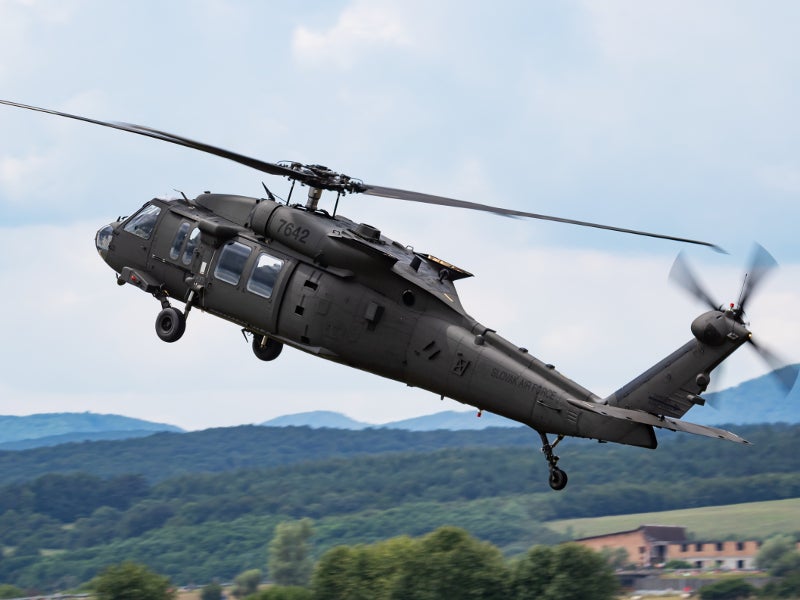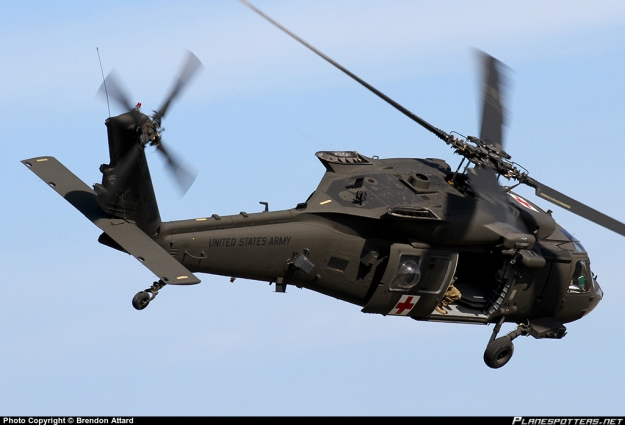Safety First: Vital Steps in UH 60 Helicopter Upkeep
Safety First: Vital Steps in UH 60 Helicopter Upkeep
Blog Article
Recognizing the Mechanics and Design Behind Uh 60 Helicopters
The UH-60 helicopter, frequently understood as the Black Hawk, stands as a pinnacle of modern-day rotorcraft innovation, symbolizing a mix of robust engineering and intricate mechanics. From its creation to its existing versions, the development of this airplane showcases a fusion of innovation and practicality. As we peel off back the layers of the UH-60's style, a world of detailed systems and careful design comes to light. Comprehending the auto mechanics and engineering behind this flexible aircraft introduces a world where precision meets power, and where each part plays an essential role in attaining trip.
Background of UH-60 Helicopters
The history of UH-60 helicopters traces back to the late 1970s when the USA Army looked for a innovative and flexible energy helicopter to replace its aging fleet. In reaction to this requirement, the Sikorsky Airplane Company developed the UH-60 Black Hawk helicopter. Presented in 1979, the UH-60 quickly became a staple in army operations due to its outstanding abilities.
The UH-60 was developed to master a selection of goals, consisting of troop transportation, clinical discharge, electronic warfare, and special operations. Its ability to adjust to different duties made it a useful possession to the united state Army and various other army pressures around the globe
For many years, the UH-60 system has undertaken a number of upgrades and variants to boost its efficiency and keep rate with progressing mission demands. These helicopters have actually seen considerable service in problems such as the Gulf Battle, Afghanistan, and Iraq, showcasing their dependability and convenience in varied functional atmospheres. The UH-60's rich background is a testament to its long-lasting tradition as a leading energy helicopter.

Engine and Power Equipments
Making use of sophisticated propulsion technology, UH-60 helicopters are geared up with advanced engine and power systems to guarantee optimal performance and reliability in a variety of operational scenarios. The UH-60, commonly referred to as the Black Hawk, is powered by 2 General Electric T700-GE-701D engines, each efficient in supplying up to 1,940 shaft horse power. These turboshaft engines supply the necessary thrust for the helicopter to accomplish its missions successfully, consisting of troop transport, medical discharge, and battle assistance.

Blades System and Aerodynamics
Exactly how do the rotor system and the rules of aerodynamics of UH-60 helicopters add to their functional efficiency and flight abilities? The rotor system of the UH-60 helicopter plays an essential duty in supplying lift and propulsion. The UH-60 includes a four-bladed, totally verbalized blades system that allows for high maneuverability and security during flight. This layout allows the helicopter to carry out a wide range of missions, from transportation and clinical emptying to combat procedures.
The rules of aerodynamics also play a key duty in the efficiency of UH-60 helicopters. The structured fuselage and rotor blade design decrease drag, allowing the helicopter to achieve greater speeds and much better gas effectiveness. The wind resistant design of the UH-60 additionally adds to its ability to operate in diverse environmental problems, including high altitudes and warm temperatures.
Avionics and Flight Control Equipment

In its complex control with the rotor system and aerodynamics of UH-60 helicopters, the avionics and trip control systems create a critical network of modern technologies forming the aircraft's functional capabilities. In the UH-60, these systems consist of electronic displays, communication radios, General practitioner navigation, climate radar, and auto-pilot systems.
The flight control systems of the UH-60 are accountable for translating the pilot's inputs into the linked here ideal adjustments to the blades system, guaranteeing steady trip and maneuverability. These systems consist of hydraulic actuators, servos, and computers that interact to manage the tail and main blades, in addition to other trip control surfaces. By precisely managing the helicopter's flight dynamics, these systems make it possible for pilots to carry out a wide range of goals, from transport and search-and-rescue to fight operations, with accuracy and confidence.
Duty and Applications in Aviation
The role and applications of avionics and flight control systems in aeronautics are integral to making sure the effective and risk-free operation of airplane, consisting of UH-60 helicopters. Avionics systems in UH-60 helicopters encompass a range of electronic systems that aid in navigating, interaction, surveillance, and regulating various aircraft features. These systems include digital screens, auto-pilot systems, interaction radios, general practitioner navigation equipment, and climate radar. Trip control systems play an important role in steering the helicopter in the air, maintaining stability, and making sure specific movements. The fly-by-wire innovation made use of in modern UH-60 helicopters converts pilot inputs into electronic signals, which are then interpreted by the flight control computer systems to readjust the aircraft's control surfaces. Furthermore, these systems include security attributes such as autopilot settings, terrain awareness alerting systems, and security enhancement systems to improve the total safety and security and operational capacities of the UH-60 helicopters in different missions, including troop advice transportation, medical emptying, search and rescue, and airborne firefighting.
Conclusion
In conclusion, the UH-60 helicopter is a functional airplane with an abundant history and progressed design. Its engine and power systems, rotor system, the rules of aerodynamics, avionics, and flight control systems all collaborate to make it a dependable and efficient equipment. The UH-60's duty and applications in aeronautics are vast, varying from military operations to browse and rescue missions. Its continued advancement and usage demonstrate its value in the area of aeronautics (uh 60).
In its complex control with the rotor system and the rules of aerodynamics of UH-60 helicopters, the avionics and trip control systems create an important network of innovations forming the airplane's operational capacities.The flight control systems of the UH-60 are accountable for translating the pilot's inputs into the ideal adjustments to the blades system, guaranteeing stable flight and maneuverability. Avionics systems in UH-60 helicopters encompass a range of digital systems that help in navigating, communication, tracking, and regulating numerous airplane features. In addition, these systems incorporate safety and security attributes such as auto-pilot modes, terrain awareness advising systems, and security augmentation systems to enhance the overall security and operational capabilities of the UH-60 helicopters in numerous objectives, consisting of army transportation, medical emptying, search and rescue, and aerial firefighting.
Its engine and power systems, blades system, aerodynamics, avionics, and official source flight control systems all function with each other to make it a effective and reputable maker.
Report this page